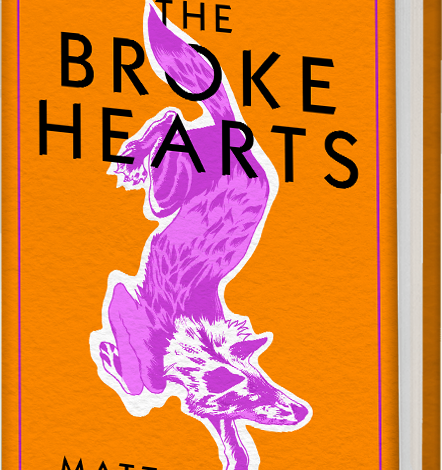Through his novel The Broke Hearts, Matt Mendez shares a story that spans generations and blurs genres. A sequel to Barely Missing Everything, the style of this follow-up is unique in that multiple stories are being conveyed within its pages.
Told from various view points and with screen play scripts, flashbacks, and Lotería cards interwoven in the prose, The Broke Hearts illustrates how the past never leaves us and how “being a warrior is about doing the hard thing every time” (4). Mendez also shares insight about having hopes and dreams but how life gets in the way with moments of heart break.
JD Sanchez and Daniel Villaneauva are teens for much of the story, and both are trying to survive the loss of their murdered friend Juan. Danny is attending college at UTEP in El Paso, and despite having all the art ability in the world, he’s on the edge of flunking out. He just can’t get inspired to do the menial exercises assigned in his art class. Although he wants to be free to produce art that he cares about, things Danny cares about have a way of vanishing on him, making caring a gamble. His art teacher perceives this behavior as Danny’s apathy: “You have all the ability in the world but not a drop of courage to make yourself, or someone else, care” (15).
Another artist, JD wishes eventually to move to Los Angeles to make movies, but first, he needs money for film school, so he enlists in the Air Force. His decision is also motivated by his desire to get as far away from where Juan was killed, from
his parents’ divorce, and from his old man’s new girlfriend. Once he finishes his four year stint in the Air Force, he’ll fulfill his dream.
In order to cope with life’s adversity, JD runs—running is when his head is the clearest and movie ideas come to him. Similarly, Danny paints, using his drawing tablet and a stylus to create colors and works like the original Don Clemente Gallo Lotería cards but with an otherworldly feel.
Both young men come to realize that they can’t run from their past because the “past happens over and over again” (69). They further learn the value of daring to be strong and courageous, to “venture anything. Be Brave enough to dare to be loved” (119). They find the courage to do what’s difficult, to “always be brave enough for the hard road” (163). Additionally, the pair realizes the value of work: “Work is a gift we give to the people we care about” (165).
Readers also get to follow another thread, that of JD’s spirit animal, the coyote. And for speakers of Spanish, the book’s value deepens since Mendez includes various numbered Lotería cards, complete with their Spanish names and key quotes, such as “por qué le corres cobarde, trayendo tan buen puñal” (70).
Just as Danny paints a mural, Mendez tells a story, providing evidence that art is a “love letter. . . for remembering the way things used to be without forgetting how things are or can be” (216).
- Posted by Donna

